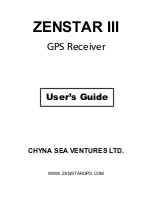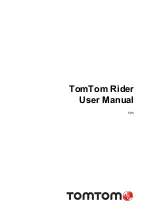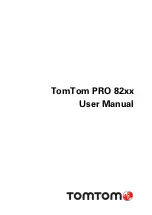
NOTE:
The ECHOMAP Plus 90 models do not have a swivel
option.
1
Using the swivel base
À
as a template, mark three pilot holes
Á
.
2
Using a 3 mm (
1
/
8
in.) drill bit, drill the three pilot holes.
3
Using the included wood screws
Â
, secure the swivel base to
the mounting surface.
4
Place the bail-mount bracket
Ã
on the swivel base, and
secure it using the swivel-mount knob
Ä
.
5
Install the bail-mount knobs
Å
on the sides of the cradle.
6
Place the device in the bail-mount bracket and tighten the
bail-mount knobs.
7
Connect each cable to a port on the cradle, using the locking
bracket or locking rings to secure the cables to the cradle
(
Installing the Cables and Connectors
).
Flush Mounting the Device
NOTICE
Be careful when cutting the hole to flush mount the device.
There is only a small amount of clearance between the case and
the mounting holes, and cutting the hole too large could
compromise the stability of the device after it is mounted.
Using a metal pry tool such as a screwdriver can damage the
trim caps and the device. Use a plastic pry tool when possible.
You can mount the device in your dashboard using the flush-
mount template and appropriate hardware.
1
Trim the template and make sure it fits in the location where
you want to mount the device.
2
Secure the template to the mounting location.
3
Using a 9.5 mm (
3
/
8
in.) drill bit, drill one or more of the holes
inside the corners of the solid line on the template to prepare
the mounting surface for cutting.
4
Using a jigsaw or rotary cutting tool, cut the mounting surface
along the inside of the solid line indicated on the template.
5
Place the device into the cutout to test the fit.
6
If necessary, use a file and sandpaper to refine the size of
the hole.
7
If your device has trim caps, use a pry tool, such as a flat
piece of plastic or a screwdriver, to carefully pry up the
corners of the trim caps
À
, slide the pry tool to the center
Á
,
and remove the trim caps.
8
Ensure the mounting holes on the device line up with the pilot
holes on the template.
9
If the mounting holes on the device do not line up with the
pilot holes on the template, mark the new pilot-hole locations
on your template.
10
Using a 3 mm (
1
/
8
in.) drill bit, drill the pilot holes.
11
Remove the template from the mounting surface.
12
Place the device in the cradle.
NOTE:
You must use the cradle and locking bracket or
locking rings when you flush-mount the device.
13
If you will not have access to the back of the device after you
mount it, connect all necessary cables to the cradle and
secure the cables with the locking bracket or locking rings
before placing the device into the cutout (
).
14
To prevent corrosion of the metal contacts, cover unused
connectors with weather caps (ECHOMAP Plus 70/90
models only).
15
Install the rubber gasket pieces on the back of the device.
The pieces of the rubber gasket have adhesive on the back.
Make sure you remove the protective liner before installing
them on the device.
16
Connect each cable to a port on the cradle, using the locking
bracket or locking rings to secure the cables to the cradle
(
Installing the Cables and Connectors
).
17
Place the device and cradle into the cutout.
18
Secure the device to the mounting surface using the included
screws.
19
Install the trim caps by snapping them in place around the
edges of the device.
Installing the Cables and Connectors
Wiring to Power
1
Route the power cable from the mount to the boat battery or
fuse block.
2
If necessary, extend the wires using 0.82 mm
2
(18 AWG) or
larger wire.
3
Connect the red wire to the positive terminal on the battery or
fuse block, and connect the black wire to the negative
terminal.
Wiring Harness
• The wiring harness is used for NMEA
®
0183 devices, and to
share route and waypoint information.
• The wiring harness connects the device to power and NMEA
0183 devices.
• The device has one internal NMEA 0183 port that is used to
connect to NMEA 0183 compliant devices.
• If it is necessary to extend the power and ground wires, you
must use 0.82 mm
2
(18 AWG) or larger wire.
• If it is necessary to extend the NMEA 0183 or alarm wires,
you must use .33 mm
2
(22 AWG) wire.
2
























